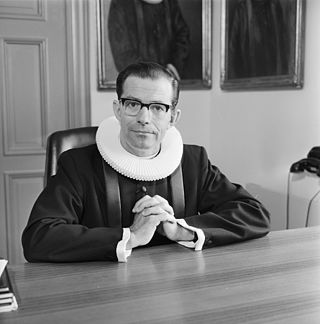
The Norwegian Petroleum Museum (Norsk Oljemuseum) is located in Stavanger, Norway. [1]

The Norwegian Petroleum Museum (Norsk Oljemuseum) is located in Stavanger, Norway. [1]
It was designed by the architectural firm of Lunde & Løvseth Arkitekter A/S and was opened on 20 May 1999. Seen from the sea the museum looks like a small oil platform. The unusual architecture has made the museum a landmark in the Port of Stavanger. [2]
The museum was built in stone, glass and concrete and covers approx. 5,000 square meters. The museum focuses on offshore petroleum activity especially in the North Sea. The museum displays objects, films, photographs and other materials have been collected that document Norwegian oil and gas activities. The museum shows the technological development from the beginning of the Norwegian oil history in the mid-1960s, from the first North Sea drilling platforms, through steel and concrete platforms developed and built in Norway, to modern, flexible production ships and subsea systems. [3]

Anno Museum in Hamar, Norway is a regional museum for the municipalities of Stange, Hamar, Løten, and Ringsaker in central eastern Norway. It includes the medieval Cathedral Ruins in Hamar mentioned in Sigrid Undset's literary magnum opus Kristin Lavransdatter. The cathedral ruins are secured under a glass shelter designed by Lund & Slaatto Architects and completed in 1998.

The University of Stavanger is a university located in Stavanger, Norway. UiS was established in 2005 when the former Stavanger University College received university status. It had about 11,000 students and 1,370 employees including academics, administrative and service staff in 2017.

Troll is a natural gas and oil field in the Norwegian sector of the North Sea, one of the biggest in the North Sea, holding 40% of Norway’s gas – it also possesses significant quantities of oil, in thin zones under the gas cap, to the west of the field. The field as a whole consists of the main Troll East and Troll West structures in blocks 31/2, 31/3, 31/5 and 31/6, about 65 kilometres (40 mi) west of Kollsnes, near Bergen. Most of the gas lies in Troll East.

Johan Olaf Brochmann Nordhagen was a Norwegian educator, architect, engineer and artist. He is most commonly associated with his restoration designs for Nidaros Cathedral in Trondheim, Norway.

Tananger is a large village and urban area in Sola municipality in Rogaland county, Norway. The urban area is located on the west side of the Stavanger Peninsula between the North Sea and the Hafrsfjorden. It lies about 10 kilometres (6.2 mi) southwest of the city centre of Stavanger. Tananger Chapel and Tananger Church are both located here.

Ledaal is a manor house which is the official residence for the King of Norway in Stavanger, Norway.

Nicolay Nicolaysen was a Norwegian archaeologist and Norway's first state employed antiquarian. He is perhaps best known for his excavations of the ship burial at Gokstad in 1880.

Nils Slaatto was for more than two decades one of Norway's most prominent and influential architects, having a strong and distinctive impression on Norwegian architecture. Slaatto cooperated with Kjell Lund in an architectural firm partnership for many years.

Jens Zetlitz Monrad Kielland was a Norwegian architect, professor and author.
Events in the year 1977 in Norway.

Frigg gas field is a natural gas field on Norwegian block 25/1 in the North Sea, on the boundary between the United Kingdom and Norway. The field is named after the goddess Frigg. King Olav V of Norway officially opened production on 8 May 1978. Production was closed on 26 October 2004. The field is situated 230 kilometres (140 mi) northwest of Stavanger. Operator for the field was the French oil company Elf Aquitaine, which merged and changed name to Total S.A.
Events in the year 1980 in Norway.
Events in the year 1970 in Norway.
Kari Nyquist was a Norwegian ceramist. She is most associated with her decorated ceramics from the Stavangerflint AS plant in Stavanger, Norway. Her designs are most often found pottery of blue clay or stoneware.

Stavanger Museum is a museum of natural and cultural history established in 1877, located in the Norwegian city Stavanger. The museum's collections consist of several departments: the department of zoology, the department for cultural history.

The Norwegian Maritime Museum is located at Bygdøynesveien on the Bygdøy peninsula, on the western side of Oslo, Norway. The Norwegian Maritime Museum is situated near several other museums, including the Fram Museum; the Kon-Tiki Museum; the Norwegian Museum of Cultural History; and the Viking Ship Museum. The Norwegian Maritime Museum is operated in conjunction with Norwegian Folk Museum.

Sigurd Lunde was a Norwegian theologian, teacher, author, broadcaster, and Bishop of the Diocese of Stavanger. Lunde also wrote music and lyrics to hymns and psalms. He was the father of news anchor Einar Lunde.

Sigurd Lunde was a Norwegian architect. He was born in Bergen, Norway. From 1894–95, he worked as an assistant to architect Jens Zetlitz Monrad Kielland. He attended the Technical University of Berlin from 1896–98, and established his own practice in Bergen in 1898. From 1904–1906 he worked in Ålesund, participating in rebuilding the city after the 1904 fire. He became one of the more prolific architects in western Norway. He also designed interiors and furniture.

Erling Viksjø was a Norwegian architect. Viksjø was an early exponent of architectural modernism. He was also noted for his use of textured concrete as a building material in a number of his designs.

The Houen Foundation Award is Norway's most important award for architecture. It was established in 1893 by Anton Christian Houen (1823–1894). A successful merchant and businessman, Houen established several philanthropic legacies and funds in culture and research.
Coordinates: 58°58′25″N5°44′05″E / 58.97361°N 5.73472°E